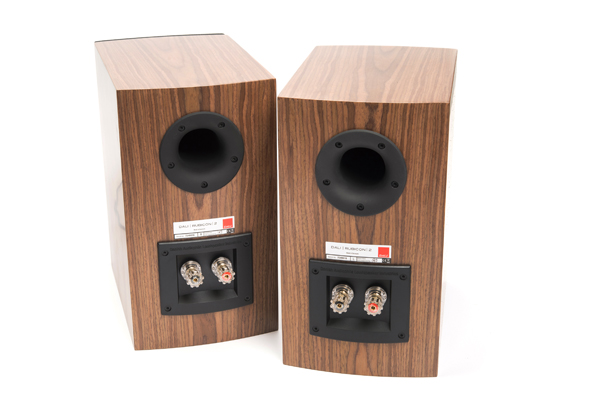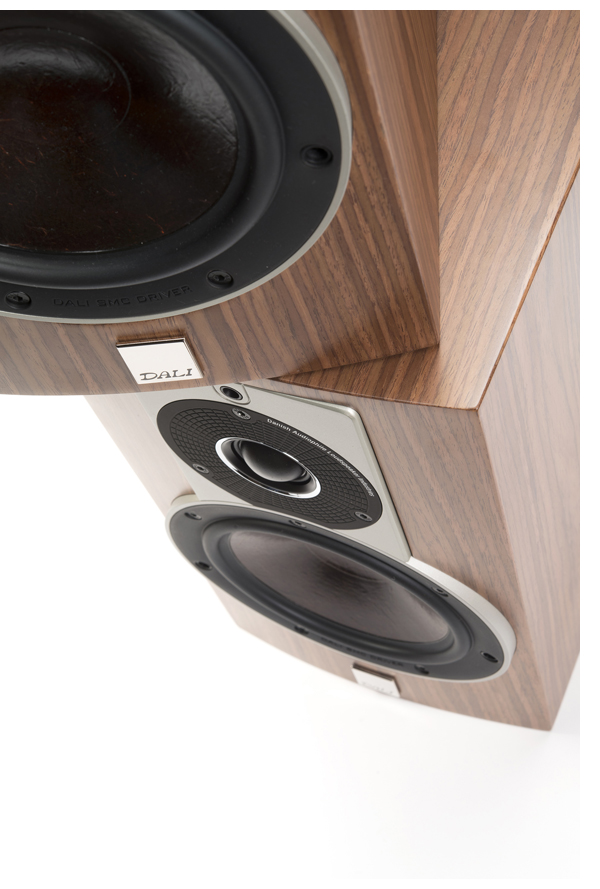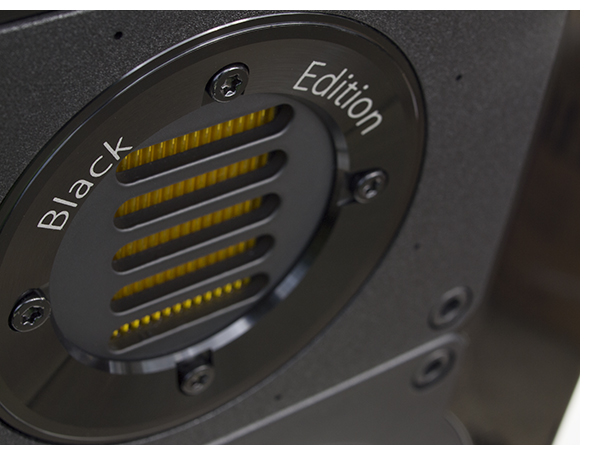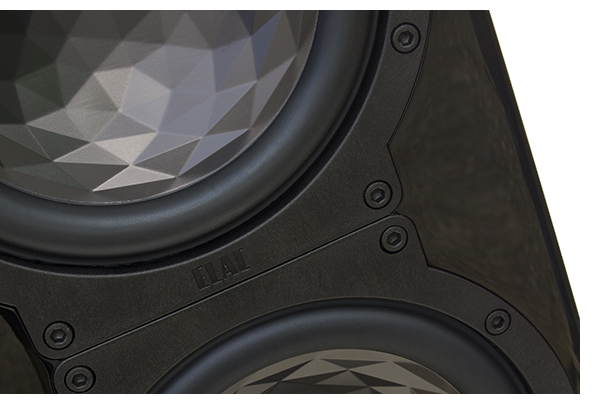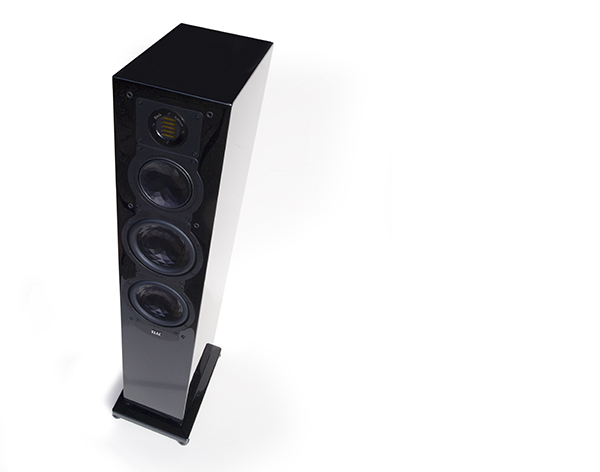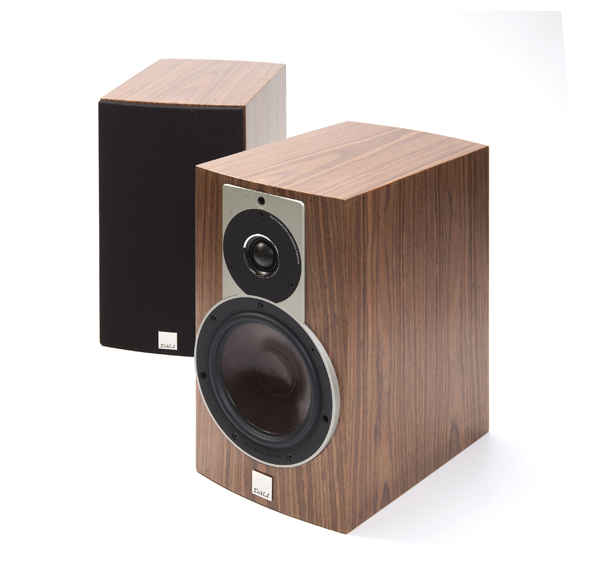 Toward the end of “Master Song,” the second track on Leonard Cohen’s breakout 1967 album, Cohen’s pursing lips sound eerily present through the 1.1-inch soft dome tweeter of DALI’s two-way Rubicon 2 speakers. This remarkable tweeter reveals all the imperfections and detailed character of this vinyl pressing. Similarly, on “The Stranger Song,” the speakers’ 6.5-inch drivers pick up several mic pops—as Cohen hits phrases like “plays for shelter” and “holy game of poker”—doing so with jarring airiness, a result of the DALI speakers portraying this rough but rich recording with loads of nuance and clarity.
Toward the end of “Master Song,” the second track on Leonard Cohen’s breakout 1967 album, Cohen’s pursing lips sound eerily present through the 1.1-inch soft dome tweeter of DALI’s two-way Rubicon 2 speakers. This remarkable tweeter reveals all the imperfections and detailed character of this vinyl pressing. Similarly, on “The Stranger Song,” the speakers’ 6.5-inch drivers pick up several mic pops—as Cohen hits phrases like “plays for shelter” and “holy game of poker”—doing so with jarring airiness, a result of the DALI speakers portraying this rough but rich recording with loads of nuance and clarity.
It’s details like these that help immediately illustrate speaker quality. And DALI—an acronym for Danish Audiophile Loudspeaker Industries—has gained a reputation for producing high-quality, high-fidelity speakers at relatively reasonable (even mid-fi) prices. Of course, at $2,995 per pair, the Rubicon 2s are far from budget speakers, but they do display characteristics you’d sooner expect from much larger and costlier models. For their size and price, the level of fidelity these speakers deliver is astounding.
Setup and Specs
Measuring about 14 inches tall, 7.5 inches wide, and 13 inches deep, the Rubicon 2s are appropriate for placement on a shelf or bookshelf, tabletop/desktop or on stands. For this review, I try placing the speakers at the forward corners of my 21-inch-tall Salamander Synergy hi-fi rack and on my 35-inch-tall speaker stands. I find that the stand placement gives the speakers the necessary height to cast a deep enough soundstage to reach the listening position about 9 feet from the speakers (though stands 28 to 30 inches tall would have placed the tweeters right at ear level, so I raise my listening seat to help make up the difference). The speakers are ported out the back, so they should be placed at least a foot or so from the back wall. Placing the speakers about 2 feet from the wall and about 6.5 feet apart (with only very slight toe-in) presents the most satisfying soundstage for this reviewer.
Beyond the time required to find the optimum placement, setting up the speakers is an absolute breeze. The gold-plated, plastic-encased terminals are big and sturdy and make it abundantly easy to connect the speaker wire. Bi-amping is not an option, but DALI says that amps with an output of as little as 40 watts will do the job. The Simaudio Moon 600i integrated amp I’m currently using as a reference really makes these speakers sing, but it is pumping 250 watts into the speakers’ 4-ohm impedance load. DALI’s specs say the speakers deliver a frequency range from 50 Hz to 26 kHz, with a sensitivity of 87 dB and the crossover set at 3,100 Hz.
The cabinet of the Rubicon 2s is MDF and available in one of four finishes: black or white in high-gloss lacquer, or veneers of rosso or walnut (walnut shown). At about 18 pounds each, the speakers are pretty hefty for stand/shelf models, which contributes to the sense that these are high-quality speakers with refined fit and finish.
Back to the Music
London Calling is one of my favorite all-time albums and is way more nuanced and better produced than most people realize (especially since it’s largely considered a punk album—but it’s so much more than that). As a result, it’s a great test record for speakers, many of which struggle to deliver the 180-gram vinyl version’s full depth and richness. During the title track, Topper Headon’s hi-hat hits are crisp and bright through the Rubicon 2s, which highlight Headon’s complex rhythms and fast stick work. In general, these speakers lean toward the bright side of the spectrum, though they are not lacking in warmth. Through lesser speakers with less-capable tweeters, the electric guitar on this track can sound gritty, even muddy, but the Rubicon 2s parse through the grit, revealing an almost jazzy tone to this punk riff.
The Rubison 2s deliver “Sacrafice,” the fourth track on the Roots’ 2002 album Phrenology, with more low-end bump than I’d expect from speakers this size. When the kick drum and bass guitar hit, I’m surprised to feel my chest rumble, which leads me to believe that the speakers’ 50 Hz low-end spec is not an exaggeration. It doesn’t rattle the walls of my apartment or anything, but it’s plenty of bass response and quite the feat for 6.5-inch driver cones.
Further illustrating the low-frequency capabilities of these speakers, the opening track of Wilco’s Whole Love on vinyl is an almost techno-sounding amalgamation of a strong beat with orchestral strings, electric guitar, amplified piano, and all sorts of trippy effects and tiny electronica noises bouncing around the soundstage. The little DALI speakers capture this big and complex recording with laudable deftness, casting a broad soundstage that extends well into the listening area and is ripe with detail and a well-sorted-out multitude of instruments. The snare hits as the song crescendos toward the end of the track are fast and realistic (coming from someone who is a drummer and has seen Wilco live), and as the bass builds, the drivers deliver a really solid LF response—there’s a lot of air coming from these speakers.
Acoustically Speaking
I like using John Gorka’s Gypsy Life on Blu-ray as a reference, because it lets you see the physical location of the musicians and gives you the option to listen to the 24-bit/96-kHz stereo mix. Delivering this audio-video experience is my extremely capable Oppo BDP-105 universal disc player. During the title track (my favorite on the disc), the DALI drivers convey Gorka’s baritone vocals with loads of depth and clarity. The speakers give a notably accurate portrayal of the soundstage, with the fretless electric bass, mandolin, Gorka’s vocals and acoustic guitar, and female backup vocals placed from left to right, just as they are in the recording studio. The bassist uses an EBow (a little battery-powered device that mimics a bowed instrument), which gives the bass a really cool ambient vibe that the Rubicon 2s portray with plenty of air and vibrato; the mandolin is delicate but still abundantly present; and the female vocals are wonderfully subdued as they complement Gorka’s deeper voice. The DALIs perfectly place all these elements in the mix, giving the track an extremely lifelike feel.
I will say that these speakers don’t quite push the mix as far out as I’m used to with the larger Stirling SB-88s and the floorstanding ELAC FS249s that I’ve been using as reference speakers. By comparison, the Rubicon 2s lack the more substantial physical depth and three-dimensionality of the larger speakers. But compared to the other shelf/stand speakers and monitors I’ve demoed, the DALIs do present considerable spatial presence.
A CD of a live recording of Shostakovich’s String Quarter in C minor (with Leonard Bernstein at the helm of the New York Philharmonic) sounds quite engaging through the Rubicon 2s. The frantic violin pulls dominate the left side of the soundstage, with the cello and contrabass responding at the right. The simultaneous melodies are captivating and displayed well out in front of the speakers, though perhaps not pushed all the way out to the listener or as far beyond the peripheral boundaries as larger speakers might. That being said, the Rubicon 2s do deliver extraordinary accuracy, depth, and richness for speakers of this size.
A Worthy Contender
There are plenty of options for high-quality stand/shelf speakers or monitors in the $3,000 range—from Bower Wilkins, Sonus faber, Harbeth, and numerous others—and the $2,995 DALI Rubicon 2s certainly hold their own. Their most praise-worthy characteristics are their accuracy, clarity, and broad frequency response, with an especially notable bass response for their size.
The tone of the Rubicon 2s tends to be a little bright with higher frequencies, though the mid and bass regions do come through with a subtle amount of warmth that lends the speakers really nice balance. Placed in a moderately sized room and paired with the right stands and a decent amount of power, these speakers can really sing and fill a reasonable amount of space with extremely satisfying music.
DALI Rubicon 2 Speakers
$2,995
www.dali-speakers.com (manufacturer)
www.soundorg.com (U.S. distributor)




